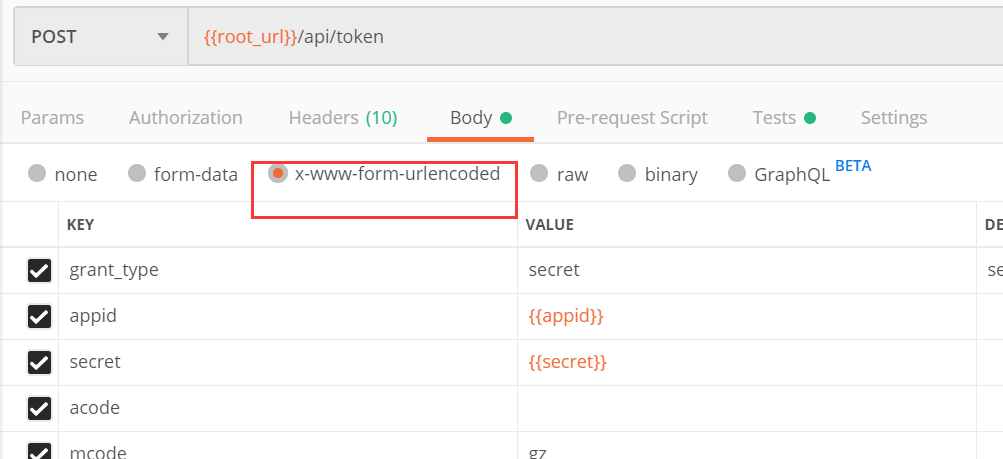

- #Httpie form data urlencoded Patch
- #Httpie form data urlencoded code
- #Httpie form data urlencoded download
Otherwise, use application/x-www-form-urlencoded.įor details and more examples, see the POST section of the official tutorial. Description HTTPie: modern, user-friendly command-line HTTP client for the API era. form-data is a fancier way of encoding data than x-file and form-data as. The moral of the story is, if you have binary (non-alphanumeric) data (or a significantly sized payload) to transmit, use multipart/form-data. Why not use multipart/form-data all the time? For short alphanumeric values (like most web forms), the overhead of adding all of the MIME headers is going to significantly outweigh any savings from more efficient binary encoding. The MIME spec gives us more options when representing the value payload - we can choose a more efficient encoding of binary data to save bandwidth (e.g. Each part has its own set of MIME headers like Content-Type, and particularly Content-Disposition, which can give each part its "name." The value piece of each name/value pair is the payload of each part of the MIME message. The Content-Type is set to application/x-www-form-urlencoded (if not.

#Httpie form data urlencoded Patch
It also provides similar methods for GET, PUT and PATCH requests. From man of httpie: -form, -f Data items from the command line are serialized as form fields. post () method supplying our URI as an argument. Parts are separated by a particular string boundary (chosen specifically so that this boundary string does not occur in any of the "value" payloads). Set the Request Method to POST Requests has a really simple HTTP verb based design, meaning that to get a response we call it's. With this method of transmitting name/value pairs, each pair is represented as a "part" in a MIME message (as described by other answers). That's where multipart/form-data comes in. For large binary files, tripling the payload is going to be highly inefficient. That means that for each non-alphanumeric byte that exists in one of our values, it's going to take three bytes to represent it. Use the -resource option to specify the unique resource ID for the Azure Databricks service, which is 2ff814a6-3304-4ab8-85cb-cd0e6f879c1d. Generate the Azure AD access token for the signed-in Azure AD service principal by running the az account get-access-token command. Getting started HTTPie installs http and https: Hello World: https httpie.io/hello Custom HTTP method, HTTP headers and JSON data: http PUT pie.
All that & more in two simple http + https commands See all features. az login -tenant#Httpie form data urlencoded download
Support for arbitrary request data and headers wget-like download mode Extensions API for authentication, etc.
#Httpie form data urlencoded code
non-alphanumeric characters are replaced by `%HH', a percent sign and two hexadecimal digits representing the ASCII code of the character A simple yet powerful command-line HTTP and API testing client for the API era. MyVariableOne=ValueOne&MyVariableTwo=ValueTwo At times, we might not have a browser-based HTTP client. To understand why, you have to look at what each is doing under the covers.įor application/x-www-form-urlencoded, the body of the HTTP message sent to the server is essentially one giant query string - name/value pairs are separated by the ampersand ( &), and names are separated from values by the equal symbal ( =). To validate the functionality of form submission workflow in a browser, let's visit localhost:8080/feedback: Finally, we can also inspect that form data is being sent in the URL encoded form: &commentSample+Feedback. It is possible to make form data the implicit content type instead of JSON via the config file. Depending on the type and amount of data being transmitted, one of the methods will be more efficient than the other. Often the only difference is in adding the -form, -f option, which ensures that data fields are serialized as, and Content-Type is set to application/x-www-form-urlencoded charsetutf-8.

The purpose of both of those types of requests is to send a list of name/value pairs to the server. The MIME types you mention are the two Content-Type headers for HTTP POST requests that user-agents (browsers) must support. Otherwise, use application/x-www-form-urlencoded.” “The moral of the story is, if you have binary (non-alphanumeric) data (or a significantly sized payload) to transmit, use multipart/form-data. application/x-www-form-urlencoded and multipart/form-data. In such a case, we don't need the HTML web form.Nice answer on stackoverflow to the question of when to use one or the other content-types for POSTing data, viz. Instead, our client could be a utility such as cURL or Postman.


 0 kommentar(er)
0 kommentar(er)
